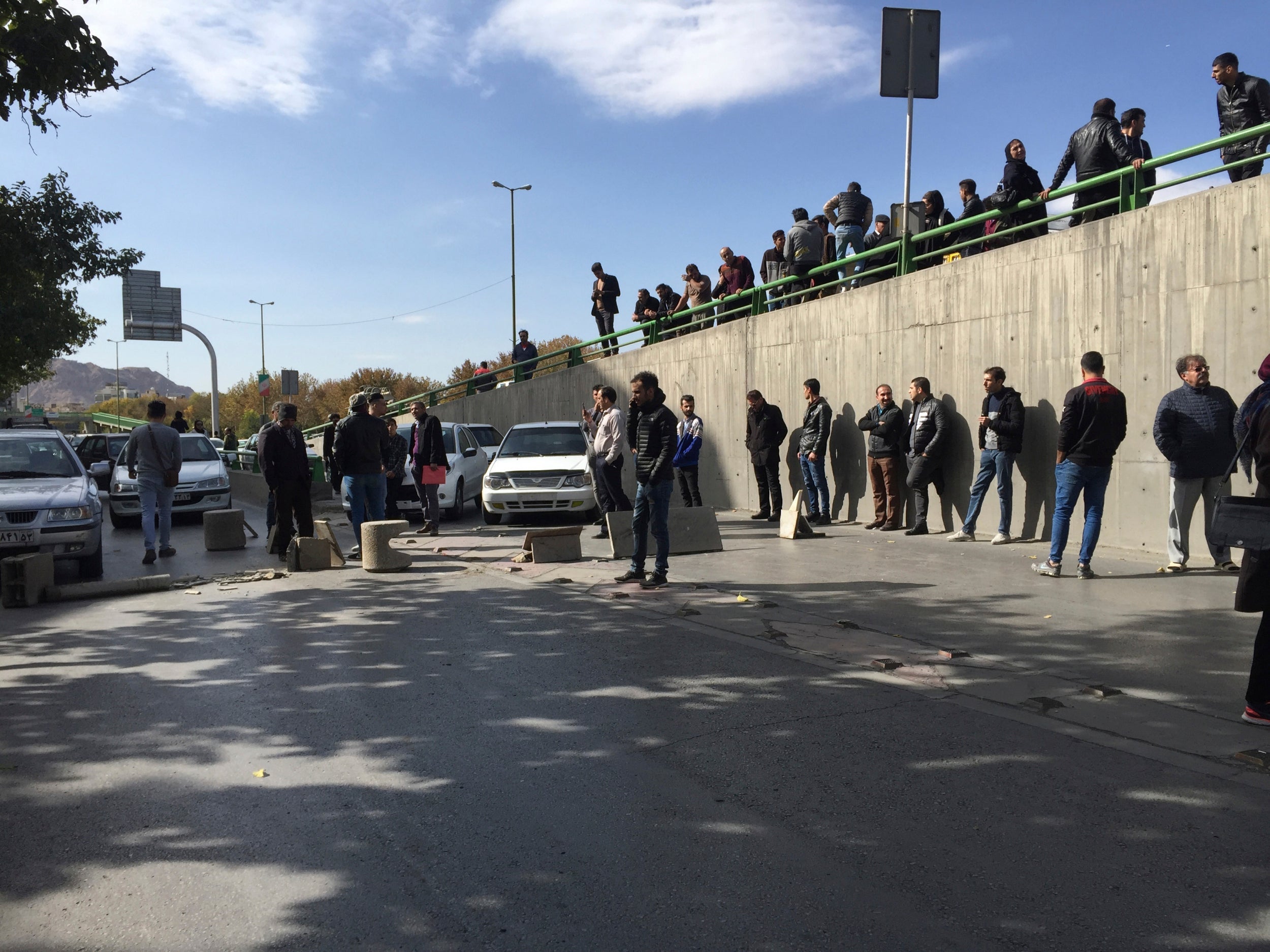Iran admits 200,000 took part in recent anti-government protests, 731 banks torched
‘Disclosing the information was just to justify the severity of the violence exercised by the state,’ says one Iran expert

Iran’s interior minister on Wednesday disclosed that up to 200,000 people took part in recent anti-government protests, sparked by the sudden hiking of petrol prices, but did not reveal an official toll of how many people were killed.
In a televised briefing, Abdolreza Rahmani-Fazli claimed protesters attacked more than 50 military and police barracks and outposts, 183 police vehicles, 731 banks, 70 petroleum stations and nine religious sites as well as 1,076 motorcycles, which are often used by pro-government paramilitaries to charge at crowds in protests.
In addition, 307 private vehicles and 34 ambulances were damaged in the protests, he said.
Protests broke out in nearly 50 sites across the country, with some of the worst unrest in poor neighbourhoods in and around Tehran, the capital, he said. And between 130,000 and 200,000 people took part in total, he added.
Mr Rahmani-Fazli said that on 16 November, during the peak of the protests that were eventually quelled by security forces using live fire and teargas, some 100 areas of Tehran were gripped by protests, with hundreds planning to seize the state broadcaster, a largely despised mouthpiece of the regime, he said.
Revolution in Iran: In pictures
Show all 11The briefing was broadcast on state television and reported on by major government-controlled news outlets.
Iranian leaders often seek to downplay the extent of domestic opposition to the regime. Mr Rahmanli-Fazli’s willingness to detail the widespread nature of the uprising may be an attempt to rally regime supporters by highlighting the threat the opposition poses.
Citing networks inside the country, Amnesty International has reported that at least 134 people were killed in the protests but has disclosed no breakdown of locations or identities of those killed.
Videos posted to social media after an unprecedented week-long shutdown of the internet showed widespread violence that included images of protesters burning down government outposts and security forces shooting protesters at close range.
Now that there is a partial restoration of the internet they have to come up with numbers to justify the lethal crackdown
“Disclosing the information was just to justify the severity of the violence exercised by the state,” Ali Fathollah-Nejad, an Iran expert at the Brookings Doha Centre, said in an interview.
“You have to present to the public something that makes sense. From day one, the government said that the protesters were hooligans. Now that there is a partial restoration of the internet they have to come up with numbers to justify the lethal crackdown.”
Human Rights Watch on Wednesday accused Iran of covering up the severity of the crackdown on protesters by refusing to disclose the number of dead.
Mr Rahmani-Fazli also claimed that between 10 to 20 per cent of protesters had “criminal records”, and that the demonstrators organised themselves into teams of four or five, with one member always a female. He presented no evidence to substantiate his assertions.
He confirmed that the regime’s most hardline shock troops were involved in suppressing the protests, which received widespread international attention.
“Basij [militia] and the Revolutionary Guard forces, who were asked by the law enforcement forces to take the responsibility, were involved in dealing with riots from the first few minutes,” he said.
Echoing other senior regime figures, Mr Rahmani-Fazli blamed “foreign media” and other outsiders for instigating the violence, which came after authorities hiked prices for fuel by 50 to 300 per cent.
Iran’s supreme leader Ayatollah Ali Khamenei claimed without evidence that the protests across the country were part of a “conspiracy” involving the US.
Subscribe to Independent Premium to bookmark this article
Want to bookmark your favourite articles and stories to read or reference later? Start your Independent Premium subscription today.


Join our commenting forum
Join thought-provoking conversations, follow other Independent readers and see their replies
Comments